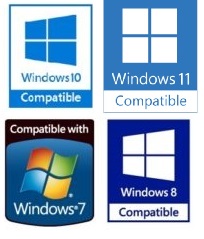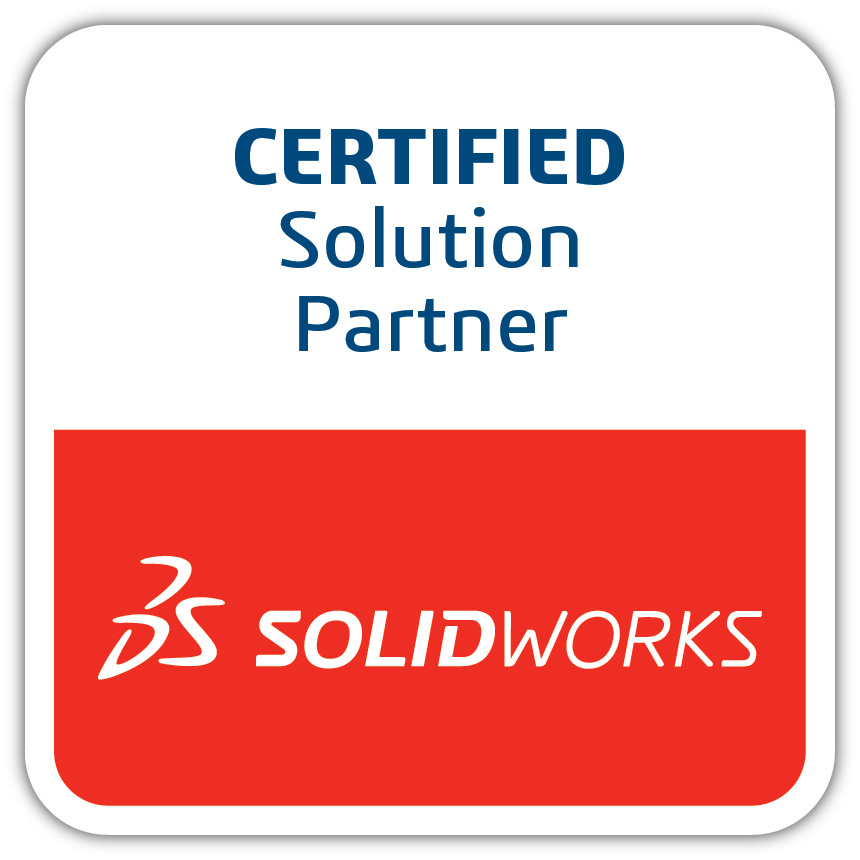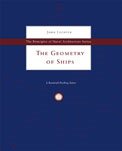
AeroHydro, Inc. PO Box 87 Ellsworth, ME 04605 207-244-4100
 Who is AeroHydro?
Who is AeroHydro?
AeroHydro, Inc. of Southwest Harbor, Maine, is a pioneer in the field of Computer Aided Design (CAD) for boats and ships, and has served the needs of the marine industry for over 25 years. More than 500 designers and builders worldwide use AeroHydro’s computerized 3D and marine design software as an integral tool in their daily business.
AeroHydro’s flagship marine design software, MultiSurf, is in use in a variety of marine environments; customers include naval architects, boat builders, marine parts fabricators, and CNC machining centers.
AeroHydro’s diverse cadre of people offer expertise in naval architecture, applied mathematics, computational hydrodynamics and aerodynamics, component technology, object-oriented programming, relational and associative modeling, design software and marine analysis, and a commitment to deliver real value to the PC-based design community.
AeroHydro’s activities today encompass a twofold focus:
- Software products: development and marketing of advanced technical software for design and manufacturing
- Consulting and technical research: customized use of our software products and technical expertise for innovative problem solving
Why AeroHydro? Commitment and proven quality
AeroHydro is the embodiment of its founder, Dr. John Letcher. Dr. John’s passion for sailing led to a lifelong involvement with the marine community, compelling him to address the needs of the marine design industry. In a nutshell, our founder and COB was:
- “A pioneer in bringing Computer Aided Design to the marine industry”
- “The creator of Relational Geometry”, with US Patent #5,581,672 – System for Relational Entities for Object-Oriented Computer-Aided Geometric Design
- “Senior Scientist for the world’s most prestigious and demanding yacht race – America’s Cup“
- “Veteran of six transpacific voyages in yachts ranging from 20′ to 36′ in length”
From his own experience as a sailor and boat builder, Dr. John knew what was needed and what a successful design program had to deliver. He surrounded himself with employees sharing his uncompromising tenet to deliver real and lasting value to all PC-based 3D design customers.
AeroHydro can help you:
- accelerate the design of world-class products
- improve product design while reducing product development times and manufacturing costs
- enhance design creativity.
Other programs will promise you that. AeroHydro’s promise is based on something very solid: RG Kernel.
Why RG Kernel? – Relational revolution
RG (Relational Geometry) Kernel is an object-oriented, relational surface modeling engine, designed to be used as the geometric core for the next generation of parametric surface modeling applications. RG Kernel offers a framework for building complex 3D models from a logical hierarchy of point, curve, and surface entities.
- RG Kernel is robust – It is the time-tested core of MultiSurf, AeroHydro’s marine design application program.
- RG Kernel is smart – It creates and automatically maintains qualitative and quantitative relationship information between design elements. Each object knows how it was constructed, and from what other objects. RG Kernel thus captures the designer’s intent, and permits rapid automatic update of a design following changes in an underlying object.
- RG Kernel gives you precise control over complex models – RG Kernel supports a rich set of entities and construction tools which ensure accurate, durable joins between surface objects. You can create and manipulate complex models composed of multiple surfaces that join accurately along common edges, or along intersections of surfaces, and stay joined following edits and modifications of the model.
- RG Kernel will get your leading edge product to market faster – RG Kernel helps developers get a head start on creating the next generation of modelers. RG Kernel, by offering a developer over 110 different entities, enables you to select the right tool for every aspect of a project. With the only relational freeform surface modeling engine on the market, you can
- spend more time working on your application: user interface, integration, etc.
- avoid the hassle of development and long term maintenance for your geometric kernel
- immediately transition to fully integrated, object-oriented, relational representation of the future.
Marine Industry Perspective
Retrospective 1973 – 2001
AeroHydro has evolved from a one-man show of the early 1970’s to the rapidly growing, dynamic enterprise of today. Back in the seventies, as a freelance yacht designer, the company’s founder Dr. John Letcher developed mainframe computer programs for diverse yacht design functions. Later in the decade, when programmable calculators and microcomputers first appeared, Dr. Letcher moved quickly to develop marine applications that opened a worldwide market for naval architects and boat builders.
America’s Cup: From Stars and Stripes to Black Magic
A major consulting opportunity arose in 1984, when as a result of his pioneering work in computer-aided yacht design, Dr. Letcher was invited to join the design team for Sail America Foundation – one of seven U.S. syndicates formed to challenge Australia for the America’s Cup. As Senior Scientist for the 30-member team, Dr. Letcher led the development of a comprehensive computer-based performance prediction, race modeling, optimization, and data analysis system which guided almost every aspect in the design of Stars and Stripes, the yacht which brought America’s Cup back to the U.S. in 1987.
The next year, AeroHydro, grown to a team of five, participated in the successful defense of the America’s Cup, developing capabilities in multihull performance prediction, design optimization, and optimal routing. In 1991, the company completed research tasks for both the Partnership for America’s Cup Technology (PACT) and the Italian Il Moro di Venezia syndicate.
Again in 1995, AeroHydro played an important role in the race and its outcome: MultiSurf was extensively utilized by Team New Zealand to design Black Magic, winner of the 1995 America’s Cup.
Compound Plate Expansion
On another front, AeroHydro received U.S. patent #4,953,094 covering numerical methods for lofting and forming compound plates. In 1991, the company won a Small Business Innovation Research (SBIR) grant from the National Science Foundation for further development of this technology.
BuoyCAD and Hull Fracture Database (HFDB)
In 1991, projects included development and delivery to the U.S. Navy and Coast Guard of BuoyCAD, a specialized interactive program for design and hydrostatic evaluation of buoys. AeroHydro developed the BuoyCAD software under a competitive contract for the Naval Civil Engineering Lab at Point Hueneme, California. The company also combined its experience in computer graphics with new skills in the use of relational databases to create an integrated fracture analysis system for ARCO Marine, enabling them to improve the design, inspection, and maintenance of their tanker fleet.
Computational Fluid Dynamics (CFD)
In 1989, AeroHydro undertook the development and marketing of Computational Fluid Dynamics (CFD) software: DSA (Doublet/Source Aerodynamics), a general potential flow panel code especially adapted to the design and evaluation of sailing yacht keels; and SSR (Slender-Ship Resistance), a unique numerical towing tank program for hydrodynamic evaluation of ship and yacht hulls. AeroHydro also teamed with SAIC to develop SLAW (Ship Lift and Wave), an advanced Dawson-type free surface hydrodynamics code, for the U.S. Navy.
AeroHydro has used MultiSurf and RG as the basis for a Navy SBIR to develop techniques for gridding and panelization for CFD analysis.
Since 1993, AeroHydro has cooperated with MIT on their WAMIT (Wave Analysis at MIT) project – a group of hydrodynamic codes developed in the Department of Ocean Engineering at MIT to predict hydrodynamic forces on ships and offshore structures. The project is supported by a Joint Industry Group, and the U.S. Navy. MultiSurf is being used to create panel models of ship hulls and complex offshore structures for analysis of seakeeping and wave loads.
SurfaceWorks — add-on to a solid modeler
In 1998, AeroHydro expanded into the world of solid modeling with an add-on to Dassault Systèmes SolidWorks Corporation‘s solid modeling application which synergistically combines solid and surface modeling. The add-on is called SurfaceWorks, and it is based on AeroHydro’s Relational Geometry. SurfaceWorks enables SOLIDWORKS users to model surfaces which would be difficult or impossible to model with SOLIDWORKS. For those designers who don’t own SOLIDWORKS, a stand-alone version called SurfaceWorks Solo was added.
SurfaceWorks and SurfaceWorks Solo provide the same relational 3D surface modeling capabilities which already are available to the marine designers using MultiSurf.
AeroHydro today – your partner in the world of 3D design!
AeroHydro is a true marine design partner, offering the most powerful and complete relational 3D CAD software, documentation and technical support, training, and an intense commitment to meet the needs of the marine design industry.
With our RG Kernel, MultiSurf and SurfaceWorks, we are expanding to address the industrial design marketplace and the global 3D design and engineering community. Besides our many marine applications, we are able to offer solutions throughout the world of general 3D CAD, from architecture to automobiles, aircraft, and beyond.



